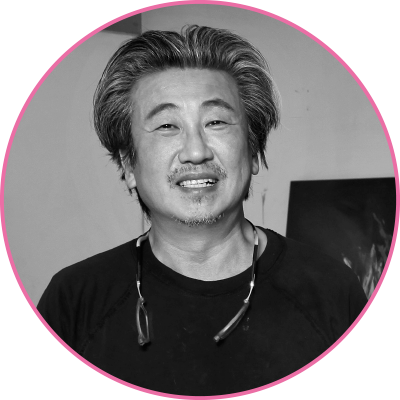
Culture and its productions can be studied from many perspectives, including politics, economics, social development, and art—even through individual points of view and behaviors—but they cannot be reduced to singular ideas. In the Western post-Romantic tradition, culture was associated with and purportedly practiced by rootless urban bohemians who lived “freely” and colorfully, but as if they had no organized self or place. After 36 years of Japanese occupation immediately followed by the Korean War, Korea endured profound cultural trauma. In this chaotic era, the US played the role of military and cultural savior, becoming a role model as well providing a paradigm for the display and dissipation of wealth. The culture of the US Army had a striking and direct influence on impoverished Korean youth in the 1950s and 60s, generating awe, possibility and confusion. Based on envy, emulation and misunderstanding, post-Korean War Americanization generated the false assumption that Americanization was the equivalent of Westernization and modernization. It fostered dreams and delusions about the sophisticated or “high class” nature of Western-type modernity and its cultures.
For recent generations Venice has been maintained as an image by a kind of conspiracy between its picturesque scenery and an almost infinite commercial viability as a tourist attraction. Venice was a compulsory destination for the Grand Tour undertaken by European artists, aristocrats and the upwardly mobile from the 17th to the 19th century—a tradition that was recalibrated at the turn of the twentieth century by the advent of the Venice Biennale and has been reinvigorated by the spectacular rise of the global art market after the 1980s. Participating artists and opening week VIPs and art world insiders are still, perhaps more than ever, seduced by the allure of the city. There is something absurd and irrational in the staging of this unending seduction and its dream of conjoining culture, politics and commercialism under the camouflage of international finance. As Susan Strange noted in 1986, the integration of worldwide finance gave rise to an economic order predicated on risk and gambling: “Casino Capitalism.” An international art event such as the Venice Biennale has both causal and symptomatic relations to the imperialism of this order. My work in the 2017 Korean Pavilion suggests that Casino Capitalism signals the death of art, but also presages a new kind of hope for its resurrection, in the era of speculation and excess.
Cody Choi
March 2017
CODY CHOI
B.1961, SEOUL
- Born and raised in Korea, Cody Choi moved to the United States in the early 1980s. After attending Art Center College of Design in Pasadena, California, he relocated to New York in the late 1980s and spent much of the 90s there developing his practice. His breakthrough work with energy boxes, which culminated in the 1996 exhibition The Thinker at Deitch Projects in New York, proposed a new paradigm organized around “cultural indigestion.” The exhibition also emblematized his innovative use of the pink stomach medicine, Pepto-Bismol. Cody Choi returned to Seoul in the early 2000s and has been living and working in Korea since. Choi’s work in sculpture, painting, drawing and installation offers one of the most profound investigations of dislocation, social and personal identities in today’s neoliberal, global economy. His traveling exhibition is currently touring Europe, making stops at Kunsthalle Düsseldorft (2015), Musée d’Art Contemporain, Marseille [mac] (2016) and Kunstsammungen Chemnitz (2017).